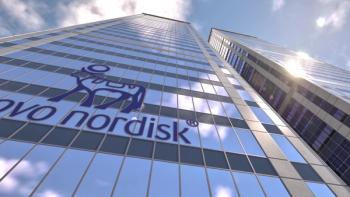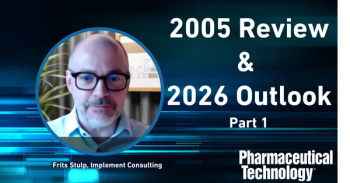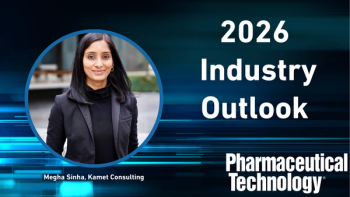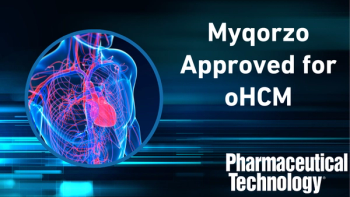
- Pharmaceutical Technology-12-02-2010
- Volume 34
- Issue 12
Global Healthcare on the Ground: Differential Pricing
Tiered pricing is used throughout industry to help increase affordability and access to drugs in the developing world.
Many companies use tiered pricing models, also known as differential pricing, for the distribution of their pharmaceutical products. Tiered pricing involves offering a drug product at a lower price or percentage to populations in developing countries or least developed countries (LDCs), thereby making the product more accessible to populations in need.
Background
The strategy largely took off in 2000 with the launch of the Accelerating Access Initiative (AAI), a collaboration of global regulatory bodies, United Nations (UN) agencies, and the pharmaceutical industry. AAI used the UN human development index to determine eligibility for differential pricing and focused on antiretroviral drugs (ARVs) to treat HIV/AIDS. In addition, industry and UN leaders tied the initiative to efforts to meet Target 4 of UN Millennium Development Goal 8 (MDG 8), which calls for pharmaceutical companies to establish partnerships to provide access to affordable drugs in developing countries.
In 2001, the World Trade Organization's Doha Declaration on Trade-Related Aspects of Intellectual Property Rights (TRIPS), allowed low-income countries to issue compulsory licenses to companies to manufacture patented drugs (i.e., generic versions) at less-than-market cost without the innovator's approval in cases of public health emergency tied to HIV/AIDS, malaria, and tuberculosis. (TRIPS has been extended to 2016, although WTO is looking into ways to provide extra flexibility so that countries unable to produce pharmaceuticals domestically can import patented drugs made under compulsory licensing (1)). In May 2003, the European Union passed regulation that enables exporters to deliver essential drugs at tiered prices to poor countries by making sure the goods are not diverted back to the European Union (i.e., ensuring that regular market prices remain intact within the EU).
Current practice
Most tiered-pricing programs still focus on ARVs as well as treatments for tuberculosis and malaria. The World Health Organization (WHO) monitors and tracks pricing through its global price-reporting mechanism. Differential pricing remains voluntary and most pharmaceutical manufactures have their own pricing schemes for determining which countries qualify for discounts and at what rate. Many pharmaceutical companies place countries into three groups (low, middle, and high income, see sidebar "Key definitions").
Key definitions
Merck (Whitehouse Station, NJ) was one of the first pharmaceutical companies to implement differential pricing for ARVs and began disclosing its prices in 2001 (2). Many other companies have followed suit. GlaxoSmithKline (GSK, London), for example, provides certain vaccines to LDCs at a 90% discount and offers its patented drugs to LDCs at a price no higher than 25% of the price paid in developed countries. The company is starting to modify its prices for middle-income countries as well (3).
Roche (Basel, Switzerland) sells Tamiflu (oseltamivir) at a reduced price for government pandemic stockpiling and offers additional price reductions to low-income countries. The company also has donated nearly 11 million treatment courses of Tamiflu to WHO, including 650,000 pediatric treatments.
Novo Nordisk (Bagsvard, Denmark) offers human insulin to LDCs at prices that do not exceed 20% of the average price in Europe, Japan, and North America (4). And Bristol-Myers Squibb has run a Global Access program since 2001 that provides the company's HIV medicines at no-profit prices to those regions most impacted by HIV and with limited ability to pay (mainly sub-Saharan Africa) (5). These are only a few examples of pharmaceutical manufacturers working to meet UN MDG 8.
Alternative approaches
Despite the benefits that differential pricing provides those in need of medicines but who can't afford them, there has been some pushback to the approach over the years. For example, middle-income countries have demanded lower prices similar to those that the poorest countries receive, and some poorer countries have been reported to use various discount rates to barter and spark competition among drug manufacturers (2).
As a result, some alternative pricing methods are being established. For example, a new GAVI funding mechanism is being tested. GAVI, an alliance involving the Bill & Melinda Gates Foundation, UNICEF, WHO, and the World Bank Group, aims to save children's lives and protect health by increasing access to immunization in poor countries. Launched in 2000, the alliance brings together various countries and donor governments with the vaccine industry, research and technical agencies, and civil society to fulfill its mission. In the summer of 2009, GAVI formally launched advance market commitments (AMCs) as a funding approach designed to stimulate the development and manufacture of vaccines for developing countries. When a company makes an AMC, it commits funding to guarantee the price of vaccines once they have been developed. The funding helps vaccine manufacturers carry out research, train staff, and build manufacturing facilities. Participating companies also make binding commitments to supply the vaccines at lower and sustainable prices after the donor funds for the initial fixed price are used.
An pneumococcal AMC pilot program aims to prevent more than seven million childhood deaths by 2030. The governments of Italy, the United Kingdom, Canada, Norway, and Russia, as well as the Bill & Melinda Gates Foundation, committed $1.5 billion to the pilot, to which the World Bank has offered its support (6). And earlier this year, GSK and Pfizer (New York) agreed to supply as many as 300 million doses of their pneumococcal vaccines over the next decade to GAVI countries as part of the pilot program.
Sources
1. WTO, "Intellectual Property: Protection and Enforcement,"
2. R. Bate, "Drug Pricing and Its Discontents," (AEI, Aug. 2007),
3. C. Strutt, Pharm. Technol. 34 (8) 129–130 (2010).
4. IFPMA, "Novo Nordisk: Differential Pricing on Insulin," Developing World Health Partnerships Directory,
5. IFPMA, "Bristol-Myers Squibb Global Access Program," Developing World Health Partnerships Directory,
6. AMC website,
Articles in this issue
about 15 years ago
Pharmaceutical Technology, December 2010 Issue (PDF)about 15 years ago
Quality Issues Reduxabout 15 years ago
Riding the Employment Roller Coasterabout 15 years ago
Pharma Faces New Political Landscapeabout 15 years ago
Report from Asiaabout 15 years ago
A Catalyst for Green Synthesisabout 15 years ago
Q&A with Coldstream CEO Larry Krankingabout 15 years ago
In the Spotlight December 2010about 15 years ago
Intellectual Property as the Foundation of Innovationabout 15 years ago
Packagers for HireNewsletter
Get the essential updates shaping the future of pharma manufacturing and compliance—subscribe today to Pharmaceutical Technology and never miss a breakthrough.




